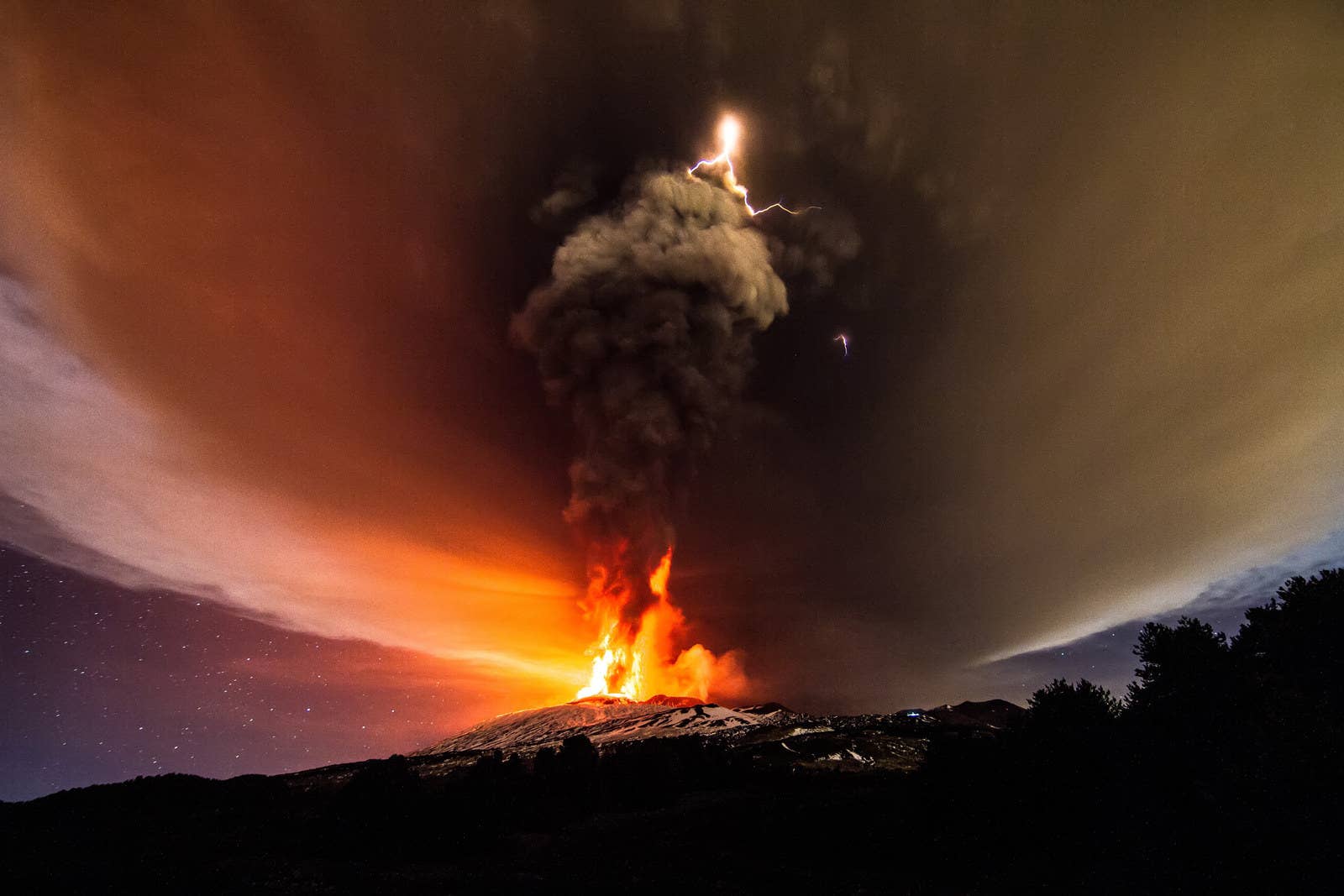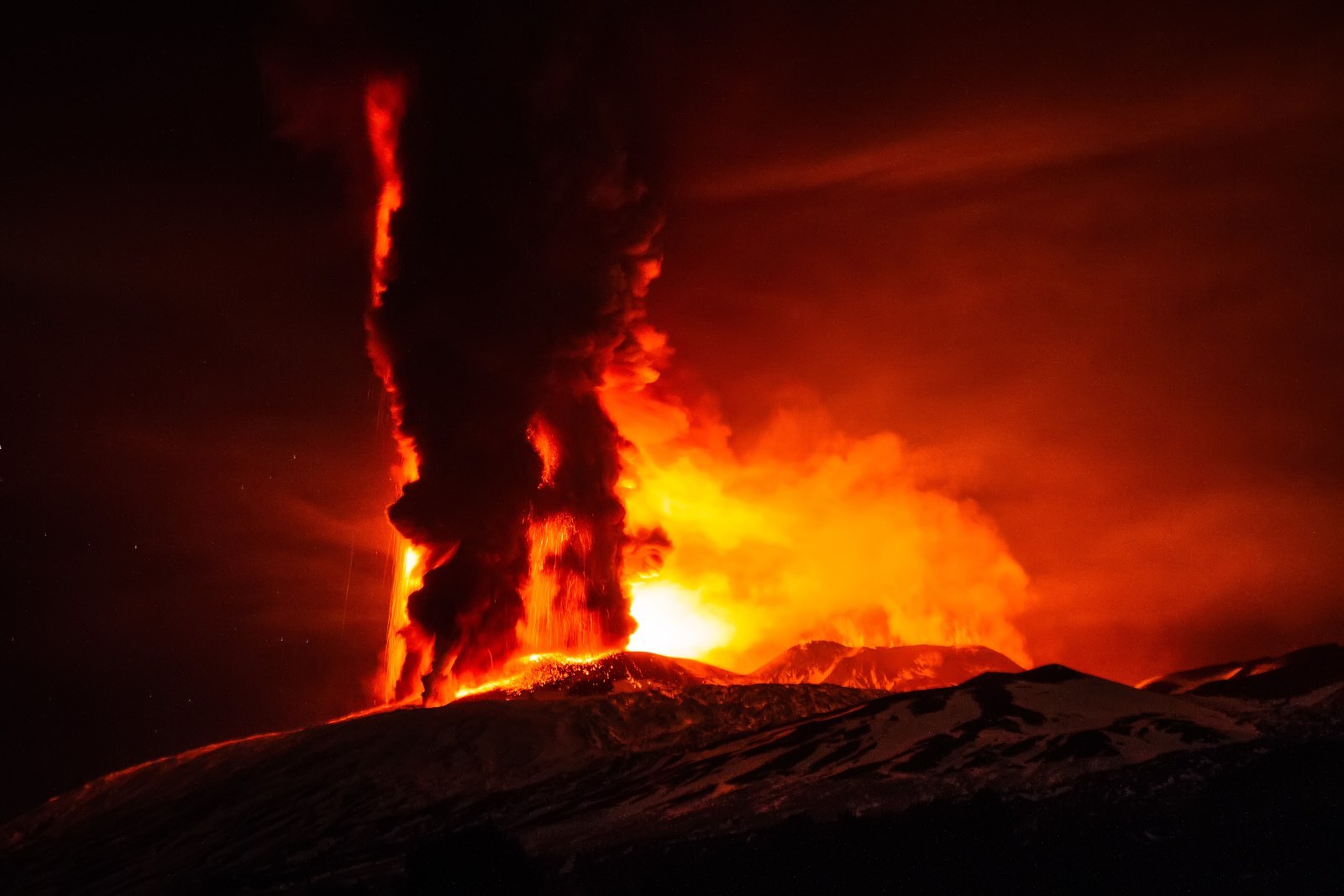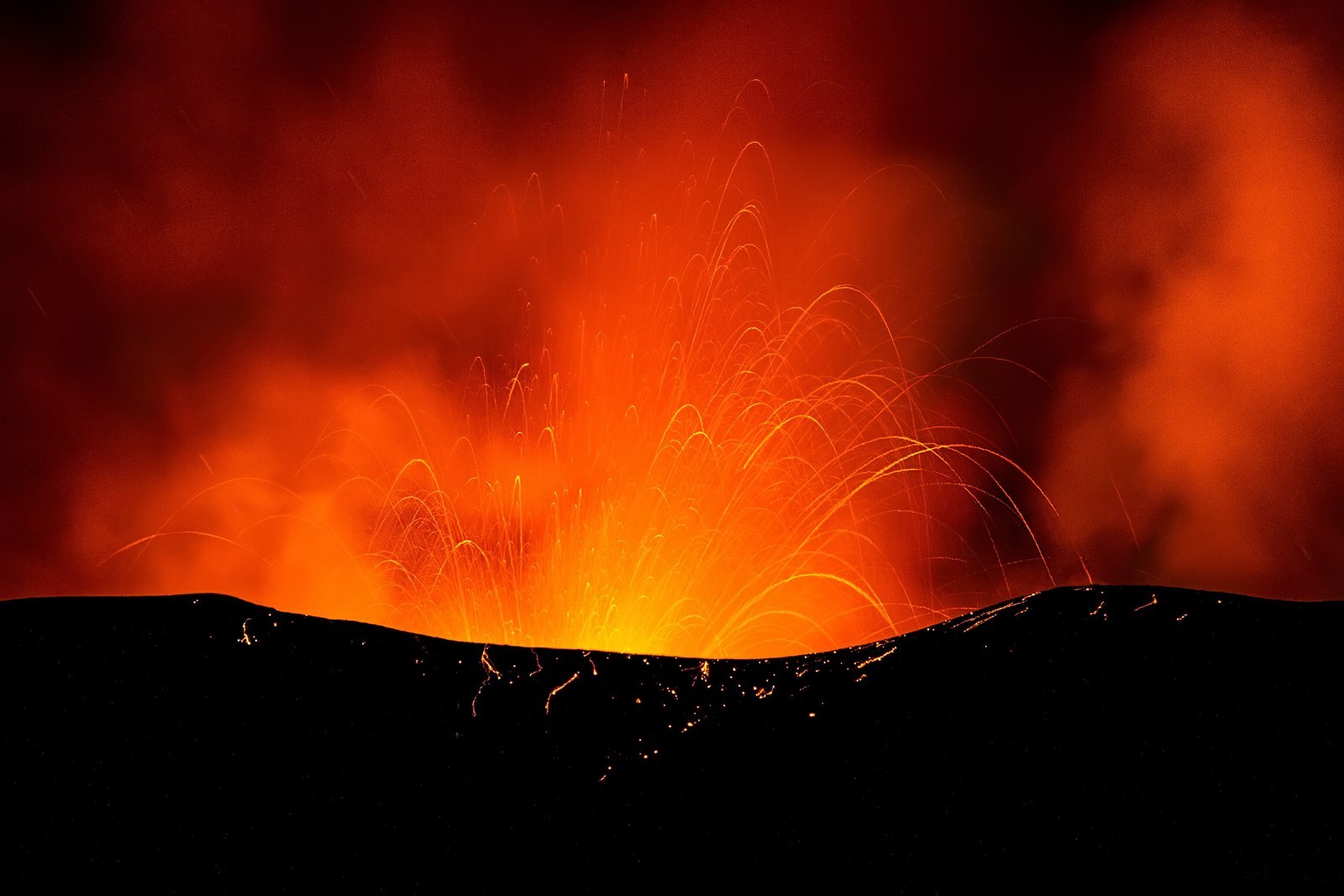Fire and ash flew several kilometres into the air as Mount Etna erupted for the first time in two years this week.

Etna sits on the east coast of Sicily, Italy, and is one of the most active volcanoes in the world. On Wednesday 2 December its Voragine crater, one of five craters at the volcano's summit, began erupting.
But among the ash, there were also bursts of lightning.

Scientists think volcanic lightning – also known as a “dirty thunderstorm” – happens because some of the material ejected from the volcano has a positive charge. The lightning is nature’s way of getting rid of the charge.
Writing in the journal Science in 1965, after seeing lightning during the eruption of an oceanic volcano off the south coast of Iceland, researchers wrote:
"Measurements of atmospheric electricity and visual and photographic observations lead us to believe that the electrical activity is caused by the ejection from the volcano into the atmosphere of material carrying a large positive charge.”
Scientists don't know exactly where this positive charge comes from, but they have some clues.

One of those clues comes in the form of small glass spheres found after an eruption. A study published earlier this year in the journal Geology found that these "spherules" were left behind after volcanic lightning during eruptions of Alaska’s Mount Redoubt in 2009 and Iceland’s Eyjafjallajökull in 2010, and scientists hope the orbs will help them work out exactly how and why we see lightning during some volcanic eruptions.
According to the BBC, Etna's eruption meant a nearby airport had to close and left several villages covered in ash.

A NASA satellite even managed to catch the eruption's ash cloud from the air.

